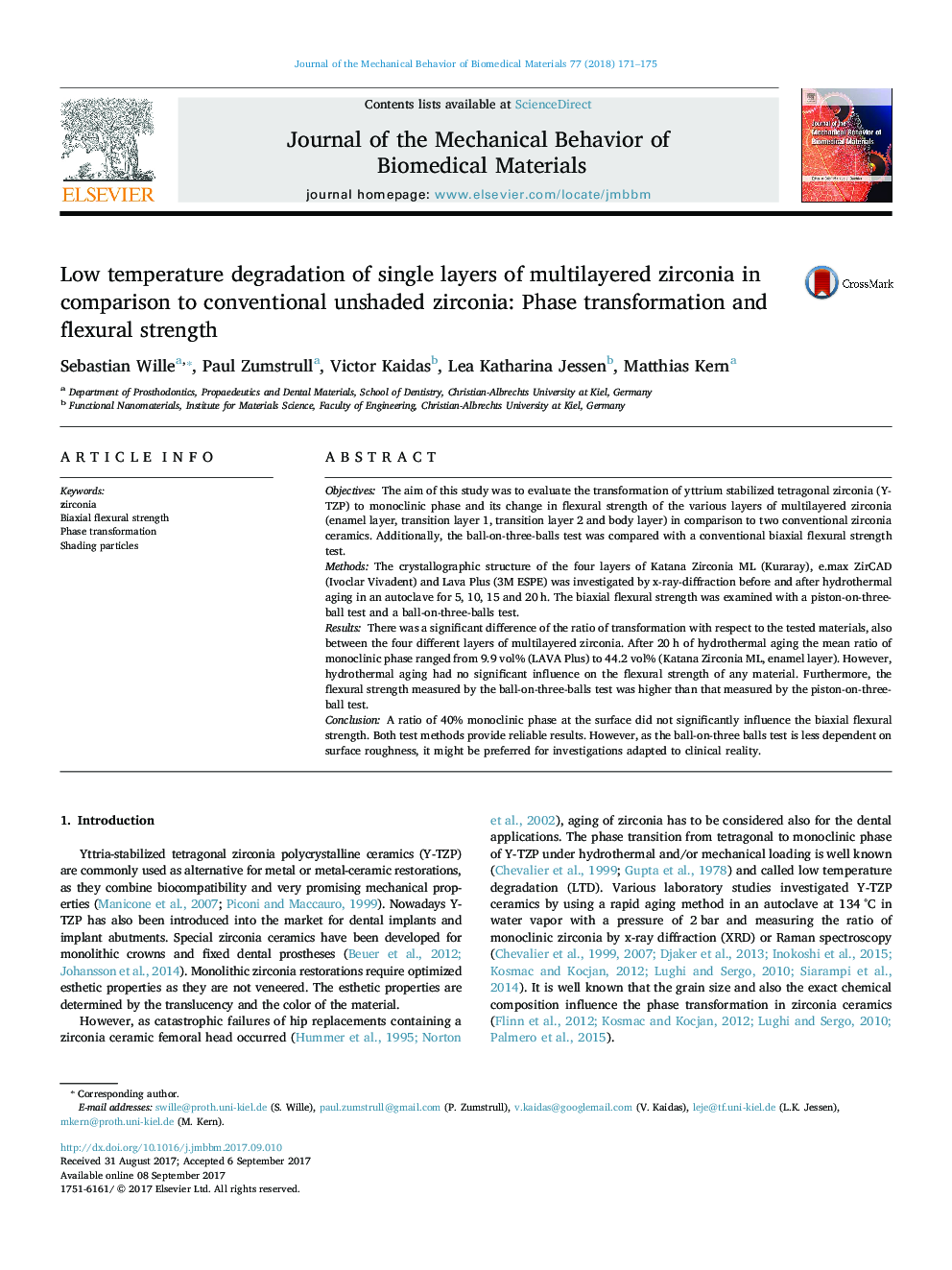| کد مقاله | کد نشریه | سال انتشار | مقاله انگلیسی | نسخه تمام متن |
|---|---|---|---|---|
| 5020353 | 1469068 | 2018 | 5 صفحه PDF | دانلود رایگان |
ObjectivesThe aim of this study was to evaluate the transformation of yttrium stabilized tetragonal zirconia (Y-TZP) to monoclinic phase and its change in flexural strength of the various layers of multilayered zirconia (enamel layer, transition layer 1, transition layer 2 and body layer) in comparison to two conventional zirconia ceramics. Additionally, the ball-on-three-balls test was compared with a conventional biaxial flexural strength test.MethodsThe crystallographic structure of the four layers of Katana Zirconia ML (Kuraray), e.max ZirCAD (Ivoclar Vivadent) and Lava Plus (3M ESPE) was investigated by x-ray-diffraction before and after hydrothermal aging in an autoclave for 5, 10, 15 and 20Â h. The biaxial flexural strength was examined with a piston-on-three-ball test and a ball-on-three-balls test.ResultsThere was a significant difference of the ratio of transformation with respect to the tested materials, also between the four different layers of multilayered zirconia. After 20Â h of hydrothermal aging the mean ratio of monoclinic phase ranged from 9.9Â vol% (LAVA Plus) to 44.2Â vol% (Katana Zirconia ML, enamel layer). However, hydrothermal aging had no significant influence on the flexural strength of any material. Furthermore, the flexural strength measured by the ball-on-three-balls test was higher than that measured by the piston-on-three-ball test.ConclusionA ratio of 40% monoclinic phase at the surface did not significantly influence the biaxial flexural strength. Both test methods provide reliable results. However, as the ball-on-three balls test is less dependent on surface roughness, it might be preferred for investigations adapted to clinical reality.
Journal: Journal of the Mechanical Behavior of Biomedical Materials - Volume 77, January 2018, Pages 171-175
